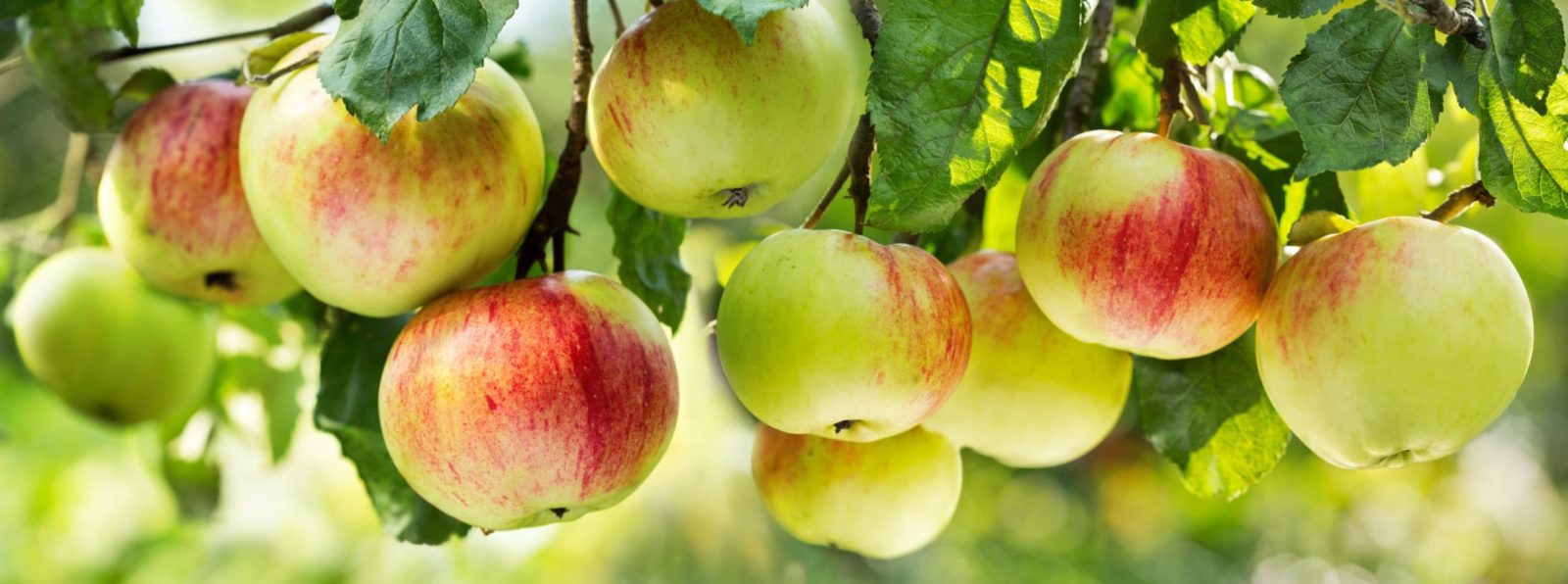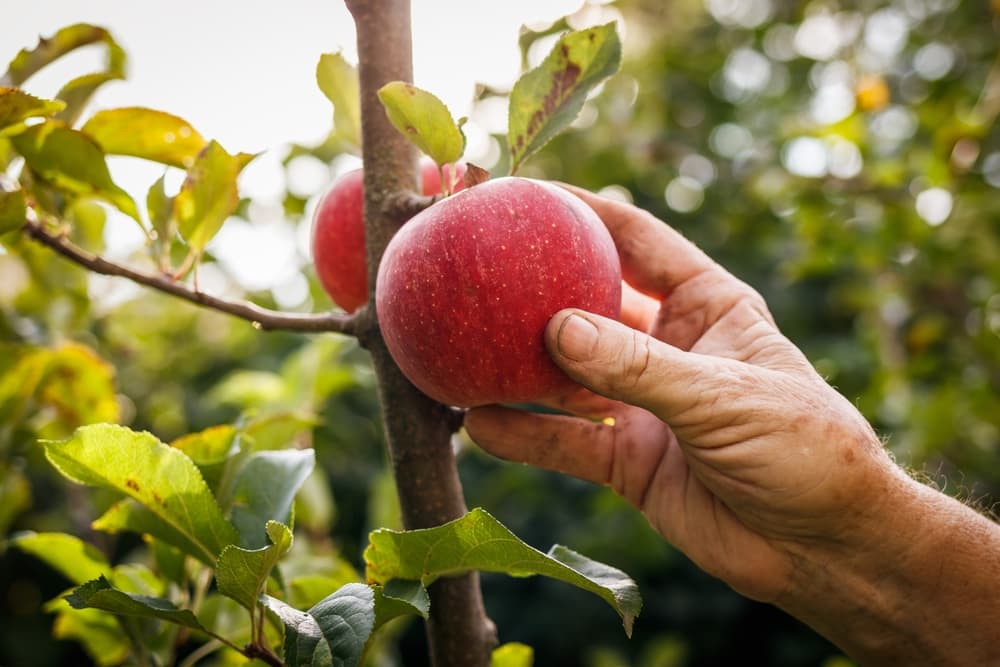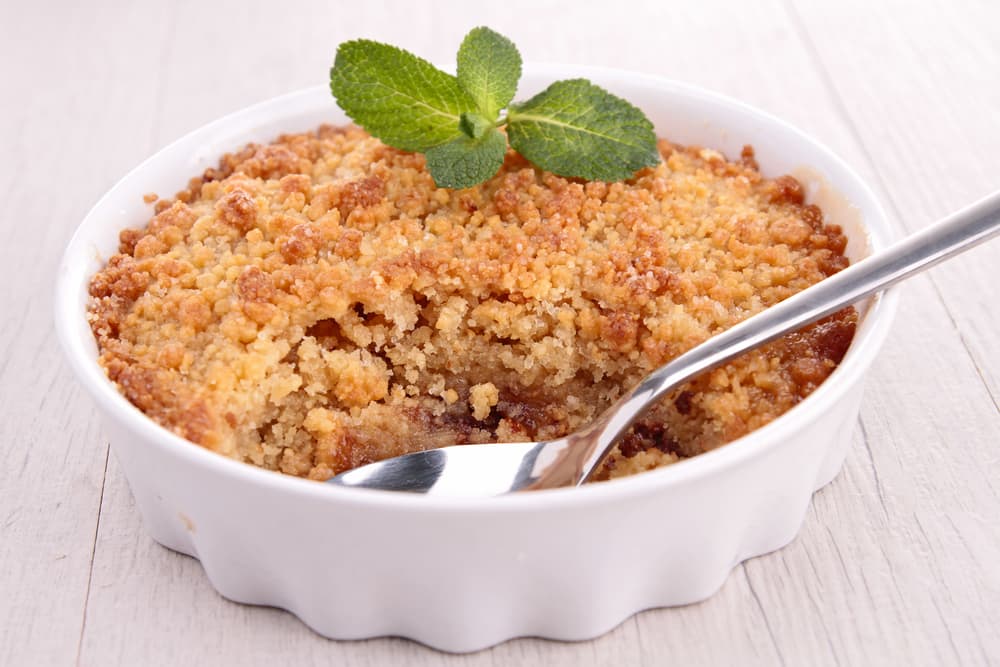Harvest, Store & Process Your Apples By Starting With ‘A Gentle Lift And Twist’


Elizabeth is a Permaculture Garden Designer, Sustainability Consultant and Professional Writer, working as an advocate for positive change. She graduated from the University of St. Andrews with an MA in English and Philosophy and obtained a Diploma in Applied Permaculture Design from the Permaculture Association.
Reviewed By COLIN SKELLY

Colin is a Horticulturist and Horticultural Consultant with experience in a range of practical and managerial roles across heritage, commercial and public horticulture. He holds the Royal Horticultural Society’s Master of Horticulture award and has a particular interest in horticultural ecology and naturalistic planting for habitat and climate resilience.
Contributions From JULIE BELLEMANN

Julie and the team strive to do more for the community than just grow trees. Described as a ‘social enterprise tree nursery’, Sheffield Fruit Trees is a not-for-profit organisation that is working towards planting more edible trees across the whole of Sheffield to connect more people to their food.
IN THIS GUIDE
APPLE TREE GUIDES
Common Problems
Container Growing
Curled Leaves
Crab Apples
Feeding
Harvesting & Storage
Not Fruiting
Pruning
Self-Pollinating
Training
Varieties
Woolly Aphids
An apple tree can be a wonderful addition to almost any garden but to make the most of your fruit, you need to know how to harvest, store and process the apples you grow.
Of course, it is likely that you will eat many dessert apples right away, and use up plenty of cooking apples in a range of recipes.
But even with a single apple tree, you may have more apples than you can handle right away. So what should you do?
“Enjoy your tree! Harvest your fruits, eat them fresh, bake them into cakes or jams, or make cider,” says Julie Bellemann, from Sheffield Fruit Trees.
“Share the glut with your neighbours but leave some for the wildlife too.”
Here is our brief guide to help you understand how best to harvest, store and process the apples that you grow in your garden:
Harvesting Apples

Most apples in the UK are ready to harvest sometime between late July/August and November.
When exactly you will harvest your apples will depend on the variety or varieties that you grow – the timing of the apple harvest can also vary quite significantly depending on the weather conditions in a given year.1Carrington, D. (2018, August 18). Ideal weather brings bumper English apple harvest. The Guardian. Retrieved March 9, 2023, from https://www.theguardian.com/environment/2014/oct/14/ideal-weather-brings-bumper-uk-apple-harvest
Apple Varieties
They might be dessert apples – sweeter cultivars often eaten fresh and raw.
They might be cooking apples, whose name is self-explanatory, or they might be older heritage varieties which are best used as cider apples.2Blue Barrel Cider Project. (n.d.). Summerwood Community Garden. Retrieved March 9, 2023, from https://www.farmgarden.org.uk/system/files/summerwood_guide_to_starting_out_in_cider-making.pdf
Whichever type or types of apple you grow in your garden, the harvest is likely, especially once trees are mature, to be the biggest and most time-consuming job of the year.

Tools like extendable fruit pickers can make this job a lot easier if you have several large, mature trees.
How To Pick Your Fruit
Apples are ready for harvest when they easily come away from the tree with a gentle lift and twist, as Julie explains:
“You can check if your fruits are ready to be harvested by giving it a gentle pull on the stem.
“It should come free fairly easily.”
If the stalks do not detach easily, it is likely that you should leave your apples a little longer.
“If you have a large tree, I’d recommend investing in a fruit picker or making one yourself to reach those fruits that are simply too high up,” Julie shares.
“Big, established trees also won’t mind being climbed in, just make sure you’re doing it safely.”
If the stalks do not detach easily, it is likely that you should leave your apples a little longer.

However, it is also worth noting that windfall apples, which are under-ripe and fall from the tree early, can still be used.
They can be used to make jellies or jams, or to make a natural fruit pectin to set other fruit jams earlier in the year, for example.
At the main harvest, remove each apple carefully from the tree (since some varieties bruise easily, and bruised fruits will not store well).

Check over the apples you harvest, putting aside any with damage or blemishes to use right away and discarding any with pests or other problems.
Make sure you are ready to store or process the apples – deciding how you will do so ahead of time will mean that there should be little wastage and you will be able to make the most of all of the fruit that you grow.
Storing and Processing
Certain apples can be stored in a cool pantry or root cellar for a few months.
However, not all apples will store well, and some will not last very long at all.
How long you can store apples in a pantry or root cellar or similar space will depend very much on the variety or varieties of apple which you are growing.
“Some varieties of fruit are best eaten fresh off the tree, whilst others can or even need to be stored for a couple of months to let the flavours develop,” says Julie.
“Check with your nursery or go online to see how your varieties should be handled.
“Don’t be scared to experiment, as you might prefer a freshly picked tart apple to a stored sweeter one, and there’s nothing wrong with that!”
Typically, apples which are harvested later, in the autumn, will store better than those which are harvested earlier in the year.
1) Storing Fresh Apples

If you have apples that are reasonably good for storage, you can keep them good for longer by laying them in single layers, in crates or on trays, with space between them.
“Apples are best stored in the dark, dry and cold, preferably spread out rather than on top of each other,” says Julie.
Each one can also be wrapped in paper, straw, or other breathable material.
You should regularly check over the apples as, as the old adage states, one bad apple can spoil the whole bunch.3Can one rotten apple really spoil the whole barrel? (n.d.). Office for Science and Society. Retrieved March 9, 2023, from https://www.mcgill.ca/oss/article/nutrition-you-asked/can-one-rotten-apple-really-spoil-whole-barrel
Remove any which are showing signs of decay as quickly as possible.
2) Dehydrating Apples

Another way to preserve your apple harvest is by dehydrating apple slices and storing these dried apple slices in airtight jars.
Apples can be dehydrated in an oven, or in an electric or solar dehydrator.
Apples will not usually air dry successfully in a humid climate like ours in the UK.
You can also partially dehydrate cooked, pulped apples in a thin layer to make fruit leather – which is like the fruit roll-ups that you can buy in the shops.
3) Freezing Apples

Cooking apples can also be frozen, either raw or cooked, if you do not have the time to process and use them right away.
This can be a good solution if you have freezer space available.
Slice and core the apples, and you can freeze them on a tray separately before placing them into airtight freezer containers.
Freezing apples means you will be able to use your homegrown apples in a range of recipes all year long.
4) Canning Apples

You can also can apples to preserve them.
If you choose to can them, it is important to use canning jars and to process them according to a canning process from a reliable source.
It’s possible to can apple slices or apple chunks in sugar syrup in a water bath canner.
You can also can apples as apple sauce, or in a range of other preserved recipes, such as apple butter, apple jams, chutneys etc.4Making Jams and Jellies. (n.d.). National Center for Home Food Preservation. Retrieved March 9, 2023, from https://nchfp.uga.edu/how/can_07/apple_preserves.html

Though in the UK it is common to do open kettle canning (filling jars and then not processing further), it is far safer to process apples or apple recipes that have been placed into jars in a water bath canner.5Ames, M. (2020, August 24). Rules for Safe Water Bath Canning. Countryside. Retrieved March 9, 2023, from https://www.iamcountryside.com/canning-kitchen/rules-for-safe-water-bath-canning/
5) Apple Juice, Cider or Cider Vinegar
If you have suitable apple varieties, you can also consider storing apples as pasteurised apple juice, or making an alcoholic apple cider, or apple cider vinegar.
To make apple juice, you may wish to invest in a juicer, or, (and this is a very good idea if you have more than one apple tree) an apple press.
A hand-turned press is a great idea if you are going to be harvesting more than a few apples.

“Pressing apples is always popular with children as well as adults,” shares Colin Skelly, an expert in all things horticulture.
“The juice is so good that there is rarely any left to store from my small garden, but I do slice some and freeze them to enjoy in the depths of winter.”
You might also wish to invest in a fruit crusher to make the job quicker and easier.
We find both of these things invaluable to process the fruits from our 6 apple trees.
Apple juice will store for a while in your fridge, but if you want to store it for longer, again, it is best to use canning jars.

Put it through 10 minutes processing in a water bath canner and keep it in sealed jars and it should keep for a year or so in a relatively cool place.6Adamant, A. (2023, February 3). Apple Jam. Practical Self Reliance. Retrieved March 9, 2023, from https://practicalselfreliance.com/apple-jam/
If you plan on making cider, or apple cider vinegar, be sure to follow a reliable recipe to achieve the best results.
You should also note that you can make scrap cider vinegar using cores or other parts which you have discarded as you processed apples in other ways.7Apple Scraps Vinegar Recipe. (n.d.). Abel & Cole. Retrieved March 9, 2023, from https://www.abelandcole.co.uk/recipes/apple-scraps-vinegar
Of course, these are just some of the many ways that you can process your apple harvest – the methods which will allow you to make use of them over the longest period of time.
It is also worthwhile considering the many recipes that allow you to use up your apples right away.
6) Cooking Apples Right Away

Cooking apples and versatile types can be used in a wide range of cooked recipes – not just the traditional pies, crumbles and other desserts, but also in breads and other baked goods, and savoury recipes like soups and stews too.

Being able to seek out and enjoy new apple recipes is just one of the benefits of growing these delicious fruits in your garden.
References
- 1Carrington, D. (2018, August 18). Ideal weather brings bumper English apple harvest. The Guardian. Retrieved March 9, 2023, from https://www.theguardian.com/environment/2014/oct/14/ideal-weather-brings-bumper-uk-apple-harvest
- 2Blue Barrel Cider Project. (n.d.). Summerwood Community Garden. Retrieved March 9, 2023, from https://www.farmgarden.org.uk/system/files/summerwood_guide_to_starting_out_in_cider-making.pdf
- 3Can one rotten apple really spoil the whole barrel? (n.d.). Office for Science and Society. Retrieved March 9, 2023, from https://www.mcgill.ca/oss/article/nutrition-you-asked/can-one-rotten-apple-really-spoil-whole-barrel
- 4Making Jams and Jellies. (n.d.). National Center for Home Food Preservation. Retrieved March 9, 2023, from https://nchfp.uga.edu/how/can_07/apple_preserves.html
- 5Ames, M. (2020, August 24). Rules for Safe Water Bath Canning. Countryside. Retrieved March 9, 2023, from https://www.iamcountryside.com/canning-kitchen/rules-for-safe-water-bath-canning/
- 6Adamant, A. (2023, February 3). Apple Jam. Practical Self Reliance. Retrieved March 9, 2023, from https://practicalselfreliance.com/apple-jam/
- 7Apple Scraps Vinegar Recipe. (n.d.). Abel & Cole. Retrieved March 9, 2023, from https://www.abelandcole.co.uk/recipes/apple-scraps-vinegar
